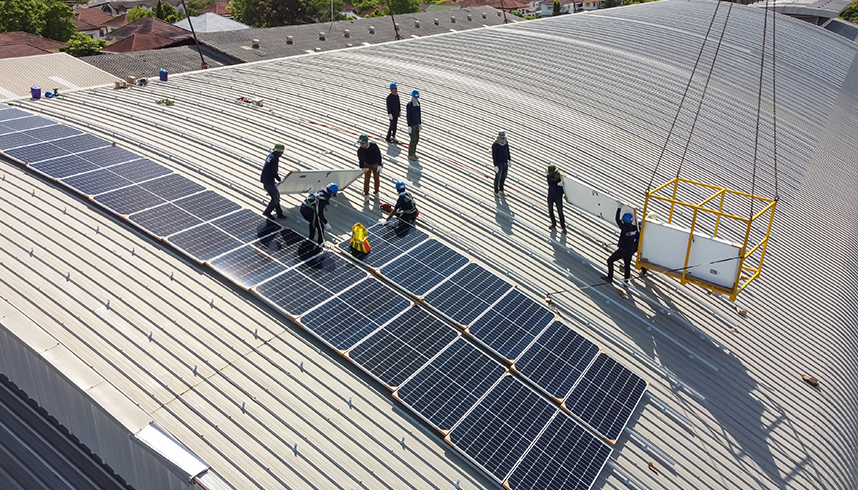
What is Emission Trading System?
Combatting climate change through the reduction of carbon emissions is crucial due to the warming of our planet. There is an urgent demand for industries to lower their carbon footprint in order to restrict global warming to 1.5 degrees Celsius. Within this framework, the Emission Trading System (ETS) represents one of the global initiatives aimed at decreasing carbon emissions. So, what is the Emission Trading System, and how is it implemented? Let's take a closer look.
What is Emission Trading System?
Implemented on a global scale, the Emission Trading System aims to reduce carbon emissions by imposing upper limits on industrial carbon emissions to mitigate environmental impacts. A significant mechanism of the Kyoto Protocol, ETS enables emission trading between countries. Known as the carbon market, this system aims to achieve cost-effective emission reductions, thereby facilitating significant steps in the fight against the climate crisis. In addition to Europe, national or sub-national systems for ETS are being implemented and developed in countries such as Canada, China, Japan, New Zealand, South Korea, Switzerland, and the United States.
“Known as the carbon market, this system aims to achieve cost-effective emission reductions.”
How is the Emission Trading System implemented?
A company that emits carbon as a result of its activities can purchase emission allowances from another company if it exceeds its own emission limit. Companies that achieve success in emission reduction can either sell their remaining allowances or save them for future use. This upper limit, known as free pollution rights or free allocation, is determined based on a company's past emission levels. The trading of allowances, either through auctions or between actors within the Emission Trading System (ETS), helps determine prices in the carbon market. The costs associated with emissions are determined by the emission quantity, serving as a mechanism that incentivizes companies to reduce carbon emissions.
Let's proceed with an example to better understand the system. Consider two companies, named A and B, each emitting 100 tons of emissions annually. Let's assume that the Emission Trading System (ETS) imposes a cap-and-trade mechanism, setting an upper limit of 60 tons of emissions for both companies. In this case, both A and B companies need to reduce their emission levels by 40 tons each. A company manages to achieve this reduction, bringing its emissions down by 60 tons. However, due to various costs, B company can only achieve a reduction of 20 tons.
At the end of the day, A company ends up with an excess of 20 tons of carbon allowances, while B company needs an additional 20 tons of allowances. In this situation, B company can continue its operations by purchasing 20 tons of allowances from A company, based on the prevailing market prices in the carbon market.
The Importance of the Emission Trading System
The Emission Trading System is of considerable significance because of the environmental and economic advantages it offers. Let's explore a few of these benefits:
Carbon Emission Reduction: It facilitates the reduction of emissions by implementing measures to control carbon emissions. The reduction of emission limits incentivizes businesses to invest in greener technologies.
Economic Benefits: Companies can engage in buying and selling within the carbon market while striving to achieve emission reduction targets. Companies meeting their emission limits can profit by selling their allowances to those with a shortfall.
International Cooperation: In a globalized world, it allows for international emission trading among different countries, thereby promoting collaboration in the global fight against climate change.
Green Technology Investment: Businesses are investing in clean energy and green technologies to comply with emission caps, thereby accelerating the transition to renewable energy and supporting the fight against climate change.

Is There a Carbon Market in Türkiye?
In our country, the Emission Trading System has not yet been implemented. However, the efforts of the Partnership for Market Readiness (PMR) project, with the support of the World Bank, are ongoing. The project, which began in 2014, completed its first phase in 2018. During this phase, the focus was on the use of carbon pricing mechanisms, training, and awareness campaigns. In the second phase, completed in 2021, comprehensive work was carried out to establish the legal and technical infrastructure for the implementation of the Emission Trading System. We, as SOCAR Türkiye, also participated in workshops where representatives and experts from various sectors took part.
The Contribution of SOCAR Türkiye to the Establishment of the Emission Trading System in Türkiye.
The formation of the Emission Trading System (ETS) in Türkiye has been ongoing for over five years. We, as SOCAR Türkiye, have been actively supporting the development of the ETS platform and also participating in the legislative preparation stages. As part of this effort, we shared design and operational data of STAR Refinery to support the selected pilot sector, the refinery sector. Additionally, we made significant contributions to legislative meetings. We provided support and commentary on the Recommendation Decisions issued following the Climate Summit. Furthermore, during this process, we engaged in discussions and evaluations with companies in similar sectors.
We are working towards combating climate change and reducing carbon emissions with our pioneering position in the industry. We aim to reduce carbon emissions stemming from our operations by integrating innovative technologies into our processes. Within this framework, we aim for a 40% reduction by 2035 and strive to achieve net-zero emissions by 2050. We are working for a better tomorrow with today's energy.